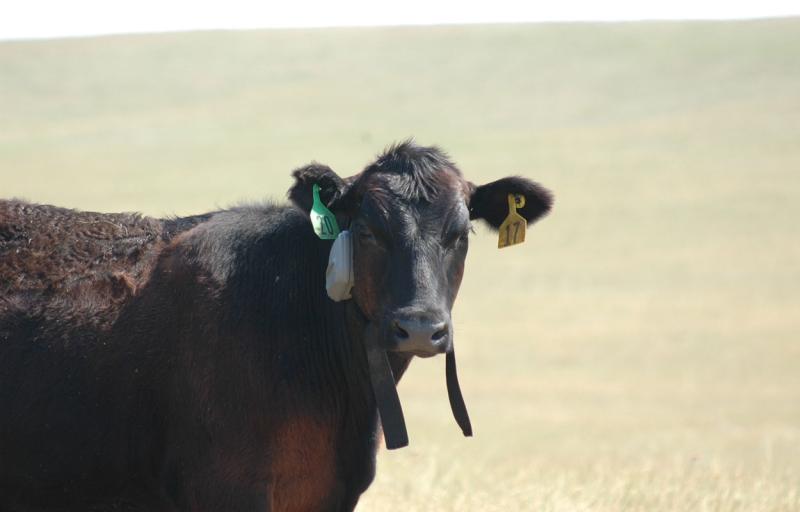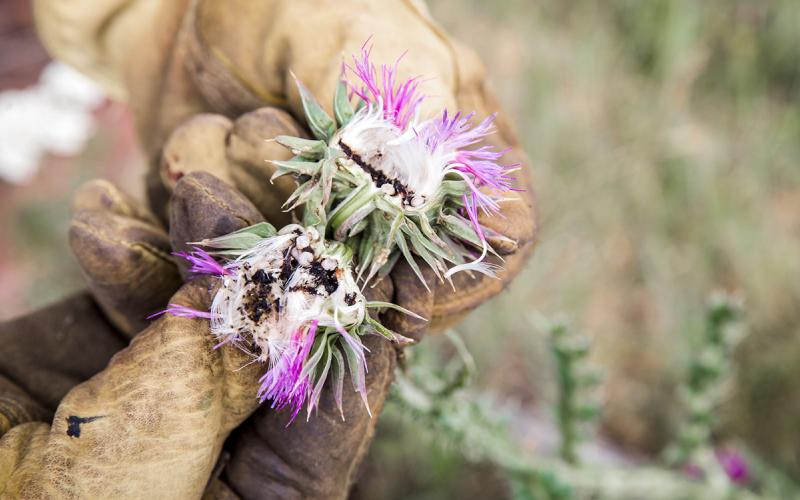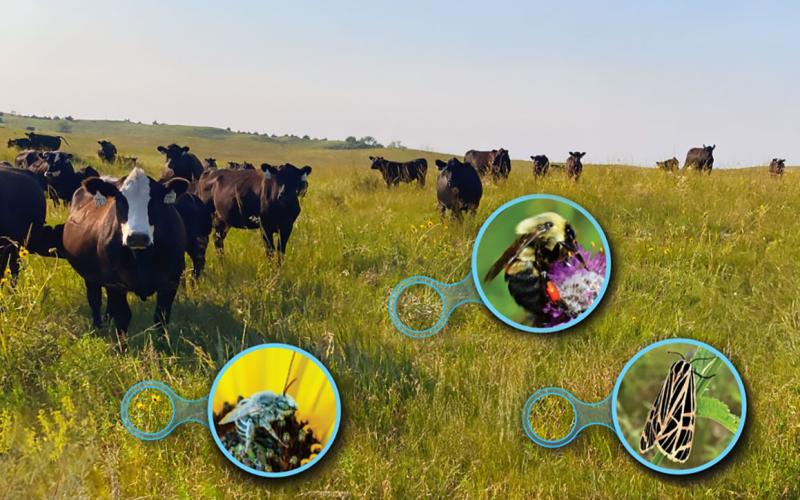Written collaboratively by Krista Ehlert, Jamie Brennan, Hector Menendez, and Logan Vandermark.
Precision agriculture technology is continuing to advance into the ranching world. One of these emerging technologies is virtual fencing, which has become increasingly available to producers. Research conducted in the past few years has shown promising results for virtual fencing to be a viable option in many scenarios. This technology allows ranchers to track their herds in real time and move them to specified areas within a pasture using computer software. Researchers, federal agencies, and NGOs have looked to virtual fencing as a tool to practice rotational grazing, improve water quality by excluding livestock from sensitive riparian areas, reduce fuel loads, and reduce the amount of physical fence that is found on the landscape.
Available Virtual Fence Systems

Virtual fence companies that are currently available for producers to purchase include:
- Vence™ (Figure 1)
- NoFence™
- eShepherd™
- Corral Technologies™
In general, most virtual fence systems function with auditory and electrical stimuli. The first stimulus the animal receives is an auditory cue when it reaches the virtual management zone. The second stimulus is a physical shock, comparable to what an animal receives from high-tensile electric fencing. Virtual fencing is available for many livestock species, including cattle, goats, and sheep. The function of these collars is similar across companies, but there are some differences that may entice producers to choose one product over another. Ranchers should reach out to companies of interest to gain further knowledge on how their product functions.
Advantages of Virtual Fencing
There are advantages to adopting virtual fencing. First, virtual fencing software allows producers to design boundaries of pastures that meet their management goals, such as a rotational grazing plan. Many virtual fencing designs use drinking water locations as an overlapping area to avoid having to invest in additional infrastructure, saving money and labor time. Second, minimal time is typically required to move cattle and check fences, as it is all done through the software. Third, virtual fencing overcomes labor, cost, and topographic barriers that normally prevent producers from implementing more-complicated grazing practices. Such practices enhance ecological benefits that cause the soil-water-plant-animal systems to thrive, rather than only maximizing one aspect such as livestock gain at the expense of the others. Fourth, virtual fencing may be a viable option on leased land, because it removes the need to install permanent improvements. Lastly, producers have greater control over animal movement and tracking on the landscape, reducing time spent gathering animals.
Challenges of Virtual Fencing
Although the benefits of virtual fencing are attractive, there are challenges associated with its use. The first challenge is that the producer needs to learn the software and how to set up paddocks, exclusions, and identification of animals. The second barrier is the time investment to collar all the livestock that need to be virtually fenced. At the SDSU Cottonwood Field Station, we have found that it takes approximately 50 seconds to collar one animal once it is in the squeeze chute. Depending on chute type and cattle size, producers may need to remove components, such as injection bars, that make collar fitting difficult. The last consideration to account for is what containment rate within a paddock is acceptable, which will vary based on producers’ perspective – essentially, what “fail rate” is a producer comfortable with? One way to look at containment rate is through opportunity costs. Producers may ask themselves, would I have otherwise been able to manage this land without virtual fencing? This is especially true for larger and more-harsh grazing areas where physical boundaries are impractical. Ultimately, virtual fencing exemplifies the potential impact technology has on increasing operation efficiency while creating positive impacts on the landscape.


